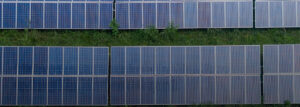Molded fiber is an eco-friendly packaging material that minimizes the environmental impact of after-use disposal. Made from recycled corrugated pulp, paper, or fast-growing fibers, it is biodegradable, compostable, and recyclable. However, not all molded fiber is the same when it comes to disposal. Brands considering should take several post-use considerations into account when assessing molded fiber packaging solutions.
Types of Molded Fiber
Molded fiber comes in four basic types:
1. Thick-walled: This type is made using a single mold using recycled materials. The finished product has a rough side and a relatively smooth side About 5 to 10 mm (3/16 to 3/8 inch) thick, it’s mostly used as plant pots or as packaging to protect heavy items during shipping.
2. Transfer molded: This type is made with recycled materials using one mold and then transferred to another mold to dry. Both sides of the finished product are relatively smooth. About 1mm to 3mm (3/64 to 1/8 inch) thick, it is commonly used to make egg trays and cartons, as well as shipping packaging for mobile phones and other electronics.
3. Thermoformed: This type is manufactured using several heated molds. It is made with either recycled materials, fast-growing fibers, or a combination. The finished product is strong and very smooth, with lots of details and minimal draft angles. Only about 0.6mm to 2mm (1/32 to 5/64 inch) thick, it provides an elegant appearance for product packaging. For many packaging use cases, it’s an eco-friendly alternative to plastic.
4. Processed: This type adds a special treatment — such as printing, embossing, or adding color — to the standard molding and curing process. It gives brands a wide range of options to customize their product packaging.
What Happens to Molded Fiber After Use?
Molded fiber is an eco-friendly packaging material that provides many benefits to brands seeking to reduce their environmental impact and meet sustainability goals. When choosing which type of molded fiber packaging best fits your need, here are the basic end-of-life questions to consider:
- How recyclable is it? Paper can be recycled about six times before the fibers are broken down too much to be
used again. Molded fiber made with recycled materials has a reduced capacity for multiple recycling. In contrast, molded fiber made from fast-growing fibers can be recycled as long as no contaminants have been added to it during the manufacturing process. This factor is particularly important for businesses that must adhere to Extended Producer Responsibility regulations.
- How biodegradable is it? All types of molded packaging are biodegradable. They’re made from water and natural materials, such as paper (wood fibers) and plants. However, the types of materials used will affect how long it will take
to break down. Virtually all molded fiber packaging can also be incinerated without harming incinerators.
- How compostable is it? Molded fiber is highly compostable because the raw materials used to make it are natural. Decayed molded fiber — along with the other materials in the compost — can be used as fertilizer for gardens and
landscaping. How quickly molded fiber will break down to its natural components in compost depends on several factors, including temperature, oxygen level, and moisture. It typically takes a few months in an industrial composting facility and a bit longer in home compost. A good sustainable packaging company should be able to conduct in-house compostability tests and share the results.
- How carbon neutral is it? The raw materials used in most molded fiber packaging are carbon neutral. Unlike plastic, they’re made from renewable sources: recycled paper or fast-growing fibers. The pipelines that deliver clean recycled paper to molded fiber producers may be less green than the sourcing pipelines for fast-growing fibers due to transport distances.
Best Option for Molded Fiber Packaging
For sustainable packaging, molded fiber made from fast-growing fibers is often the best choice. It is sourced from abundant, highly sustainable materials. The next best option is molded fiber made from recycled post-industrial trimmings.
Molded fiber made from fast-growing fibers also provides a premium-quality product. It has longer fiber lengths and greater fiber concentration. It’s flexible, durable, and moisture resistant, and it has minimal dust residue. It can be thermoformed into stronger but thinner thicknesses, offering a much wider range of packaging solutions. It provides a smooth feel and excellent draft angles.
Molded Fiber and the Circular Economy
Molded fiber made from fast-growing fibers also fits into the circular economy. The circular economy is based on three key principles: designing out waste and pollution, keeping products and materials in use, and regenerating natural systems.
Two of the primary goals of the circular economy are to reduce the impact of plastic waste and single-use packaging.
Molded fiber packaging made from fast-growing fibers fits well into circular economy strategies. Adopting this highly eco-friendly packaging solution instead of using plastic or recycled materials adds value in two key circular economy spheres: resource recovery and circular supply chains.
Making the Eco-friendly choice
Finding the right eco-friendly packaging solution to meet consumer demands and internal sustainability goals can be a challenge. Fortunately, new manufacturing techniques are producing high-quality, creative molded fiber packaging using fibers from fast-growing plants like bamboo. Sourcing these materials is more eco-friendly and sustainable than using recycled materials. By partnering with a trusted molded fiber packaging producer, brands can achieve their social responsibility and circular economy goals — while enjoying the benefits of using packaging made with sustainable materials and methods.











